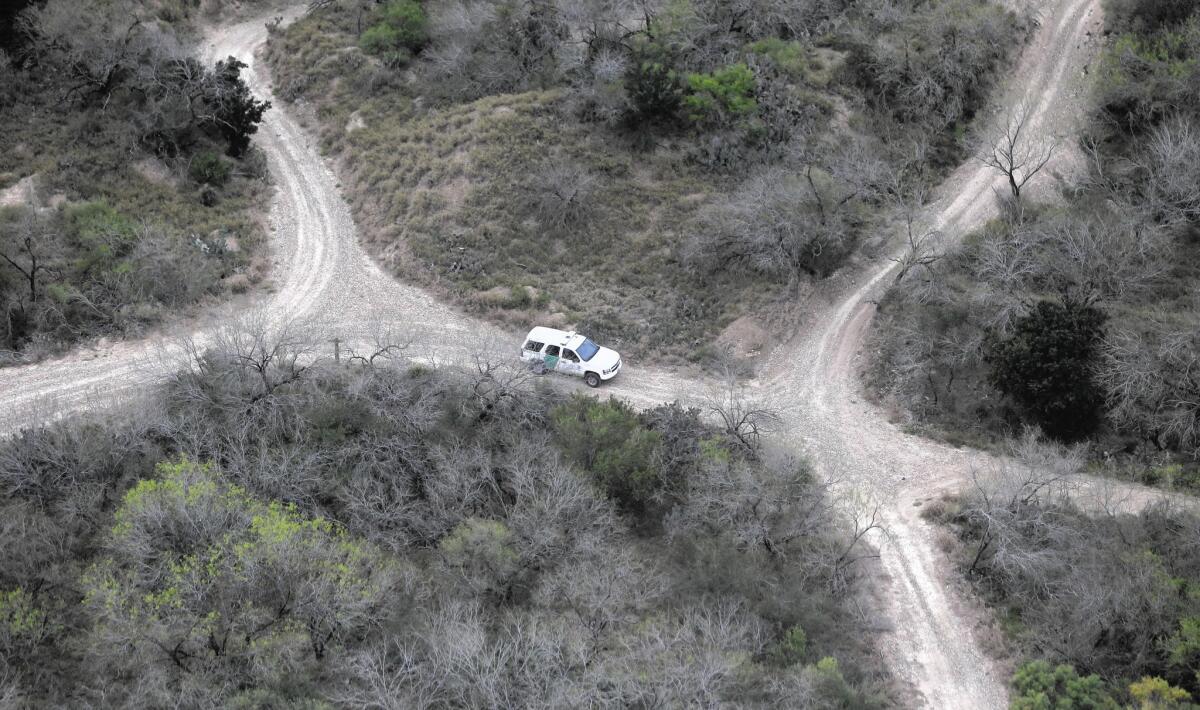Border agents’ use of firearms declines after new guidelines adopted

- Share via
Reporting from WASHINGTON — Border Patrol agents have used firearms and other weapons less frequently in recent months on the often-violent Southwest border after implementation of guidelines aimed at curbing abuses, officials said Wednesday.
R. Gil Kerlikowske, commissioner of U.S. Customs and Border Protection, said the agency had logged 385 use-of-force reports since Oct. 1, the start of the federal fiscal year, which he said was nearly 30% less than a year ago.
Although the rate is still about two a day, it marks a potential turning point for the long-troubled Border Patrol. The force has faced growing criticism for agents shooting unarmed people, sometimes across the border in Mexico, usually in response to rocks being thrown.
------------
FOR THE RECORD:
Border patrol: In the April 9 Section A, an article about the Border Patrol’s decreased use of firearms and other weapons on the southwest border referred to Vicki Gaubeca, director of the American Civil Liberties Union’s Regional Center for Border Rights, based in Las Cruces, N.M., as a lawyer. She is an activist, not an attorney.
------------
Few agents have faced prosecution or other apparent accountability, even in shooting deaths.
The agency did not release detailed statistics Wednesday, so it’s not known whether the number of shootings by agents has fallen compared with use of nonlethal weapons, including Tasers, pepper spray and batons.
Kerlikowske said he was encouraged by the overall trend, however, and would continue to push for changes in what he characterized as an insular culture at the federal government’s largest law enforcement agency.
“Historically, our default position after something … was to circle the wagons and say, ‘No comment,’” Kerlikowske said in a speech at the Brookings Institution that reviewed his first year as commissioner.
After reviewing internal files on 67 deadly force cases, a group of police experts in 2013 criticized the Border Patrol for weak internal investigations and for use-of-force guidelines that gave agents far more latitude than is allowed at most U.S. law enforcement agencies.
The report suggested a pattern of abuse and little public accountability. It said agents at times fired in frustration rather than when they faced a serious threat from people trying to smuggle contraband or sneak across the border.
Border Patrol officials initially rejected the report’s conclusions. But after a change of leadership last year, the agency adopted guidelines that incorporated many of the police group’s recommendations.
For example, new rules say that agents should retreat first under rock assaults, rather than shoot, and should avoid firing at people in cars.
The agency also has revamped parts of its training program and is experimenting with body cameras to help document attacks on agents or other incidents.
“No apprehension, no seizure, no arrest and no pursuit is worth the risk to an agent or a member of the public being injured or killed,” Kerlikowske said.
But Kerlikowske, a former police chief in Seattle, has been less successful at revising the agency’s slow-moving system of internal discipline.
In a Jan. 28 interview with the Los Angeles Times, he said a special investigation had raised questions about 14 shooting cases. But he said none had been resolved and none of the agents involved had been disciplined.
A lawyer who tracks Border Patrol cases said the new leaders were “definitely trying,” but added that she had yet to see reforms on the Southwest border.
“I think there’s a lot of things in motion to change the culture of the agency, but we’re still waiting to see something substantive,” said Vicki Gaubeca, director of the American Civil Liberties Union’s Regional Center for Border Rights, based in Las Cruces, N.M.
According to the center, four people were shot to death by Border Patrol agents last year. Four others were killed by off-duty agents in personal disputes. Three people have been killed along U.S. borders so far in 2015.
Twitter: @JTanfani
More to Read
Sign up for Essential California
The most important California stories and recommendations in your inbox every morning.
You may occasionally receive promotional content from the Los Angeles Times.














